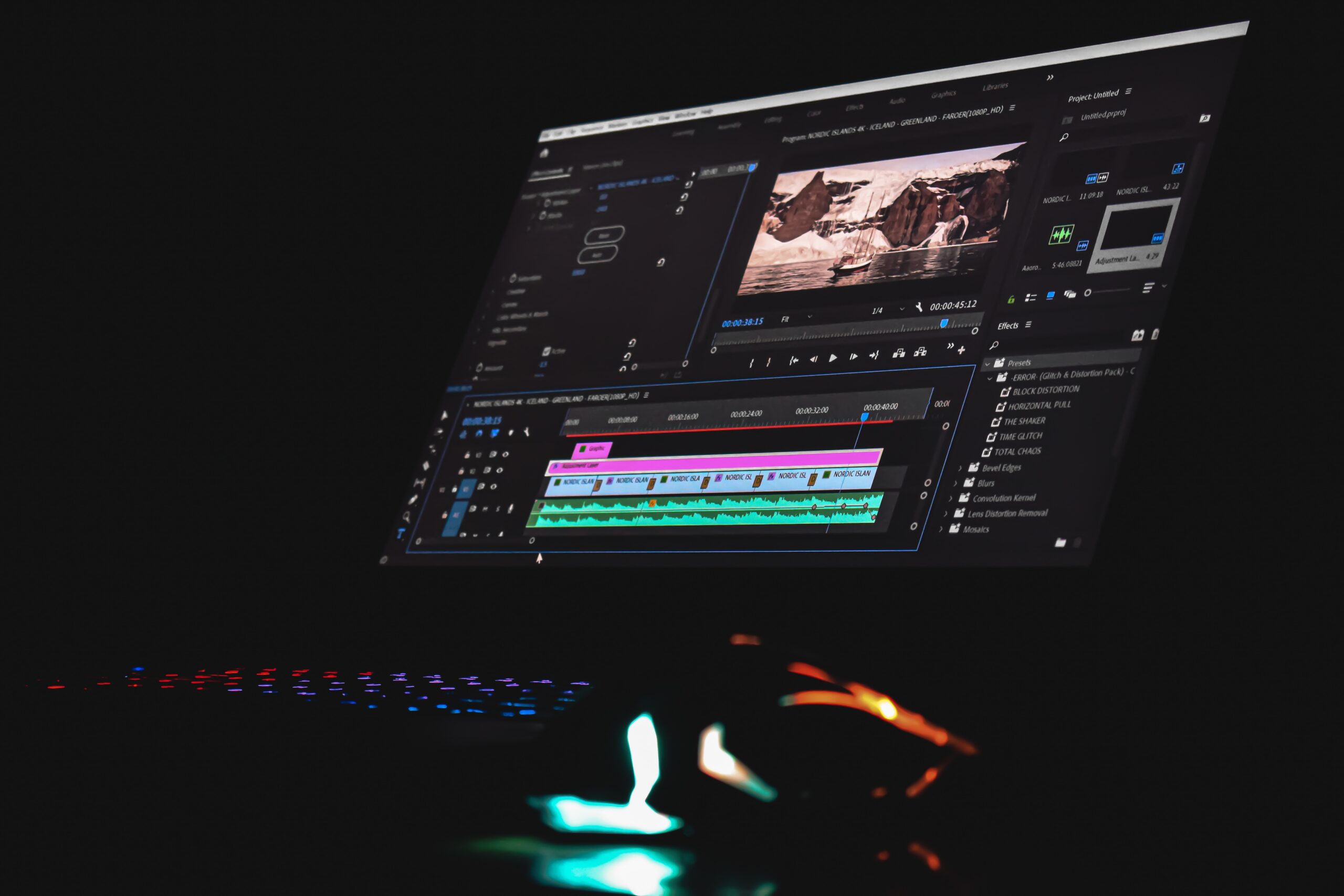Photo by Sanjeev Nagaraj on Unsplash
It’s said that a picture is worth a thousand words, but what about a video? A well-crafted video, woven together by skilled hands, tells tales that can move nations. In this digital era, video making and editing offer ample career opportunities. That brings us to the question of how to become a video editor. Video editing isn’t just about mastering software; it’s about understanding the art and soul of storytelling. Dive in as we explore the transformative power of video editing and how it shapes the media landscape.
1. The Essence of Storytelling: More Than Just Cuts and Transitions
To many, video editing might seem like a simple task of trimming and joining clips. But it isn’t just that. As Adobe ACP says, “Video editors’ responsibilities range from pre-production to post-production of visual media. They assemble, cut, splice, and manipulate footage for films, broadcasts, TV shows, commercials, online videos, and more using computer software. They also add and align voiceovers, music, sounds, graphics, and special effects to help tell stories effectively”.
Imagine it this way. An artist sees potential in a raw block of marble and chisels away until a statue emerges. Similarly, video editors perceive stories in raw footage. Their work goes beyond the basics; it’s about pacing, inducing emotions, and creating a rhythm that resonates. Each transition or effect has a purpose, guiding the viewer through a myriad of emotions, ensuring they’re not just watching but feeling.
2. Tools of the Trade: Harnessing Technology for Creativity
The digital age offers video editors a plethora of tools and softwares brimming with features that can seem overwhelming. Yet, in skilled hands, these tools are akin to a painter’s palette, full of colors waiting to splash life onto a canvas. While technology offers the means, it’s the editor’s vision that crafts narratives. Techniques like color grading or special effects can elevate a scene, making moments memorable. But remember, these tools, however advanced, serve as extensions of an editor’s creative vision.
3. From Raw Footage to Polished Gems: The Editor’s Journey
Imagine sifting through hours of footage, akin to a miner seeking diamonds amidst heaps of earth. This is the video editor’s realm. Their task is monumental: filtering, selecting, and sequencing clips to craft a narrative that’s both engaging and coherent. Every second of the final video is a result of decisions made during this intricate process. And much like how not all mined stones make it to the jewelry store, not all footage sees the light of day in the final cut. It’s a journey of discernment and creativity.
4. Setting the Mood: The Subtle Power of Sound and Music
Have you ever watched a suspenseful scene with circus music playing in the background? Sounds odd, right? Soundtracks and sound effects are the unsung heroes of video editing. They underscore emotion, punctuate moments, and enhance immersion. A poignant scene can be amplified by a soft melody, while a chase can get adrenaline pumping with fast-paced tunes. A video editor, in this sense, is also a maestro, orchestrating a symphony that resonates with the visuals.
5. The Impact on the Audience: Videos That Resonate
Think of the last video that truly moved you. Was it the cinematography? The actors? More often than not, it’s the editing that elevates a video from good to unforgettable. By controlling the narrative flow, pacing, and emotional beats, video editors hold a pivotal role in determining how an audience reacts. A well-edited video doesn’t just end when the screen goes black; it lingers, evoking reflection and emotion long after the final frame.
The realm of video editing is a dance between art and technology. It’s where creativity meets craft, where raw footage is metamorphosed into evocative tales. As media continues its relentless evolution in this digital age, the role of the video editor remains paramount. They don’t just edit; they craft stories, shape perceptions, and leave indelible imprints on the canvas of our minds.
